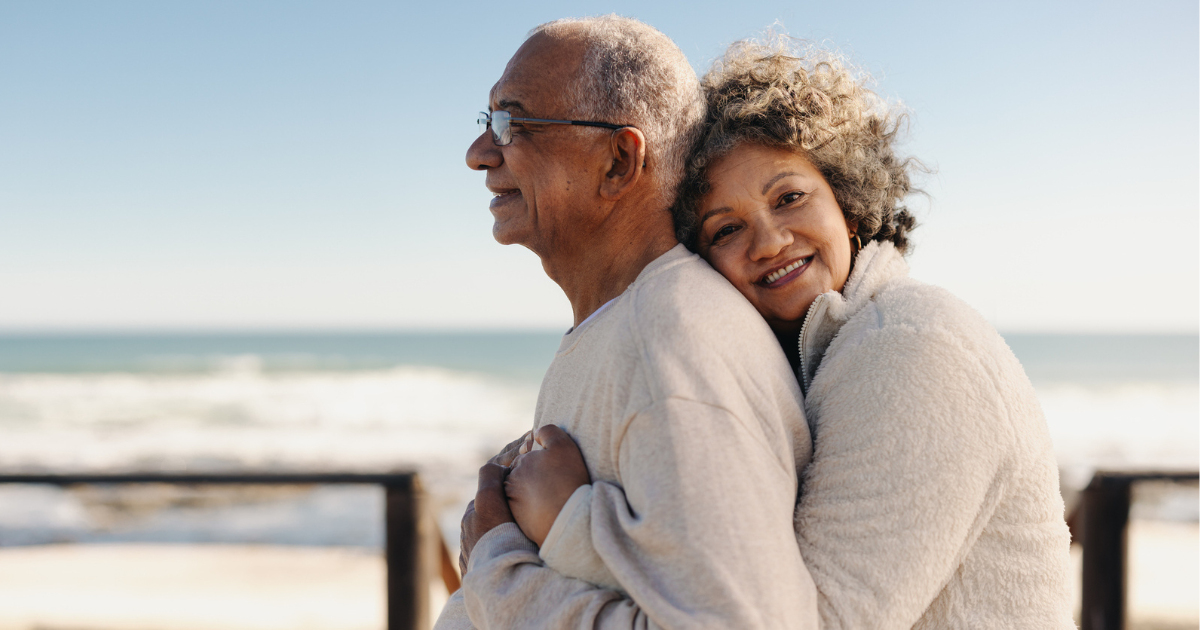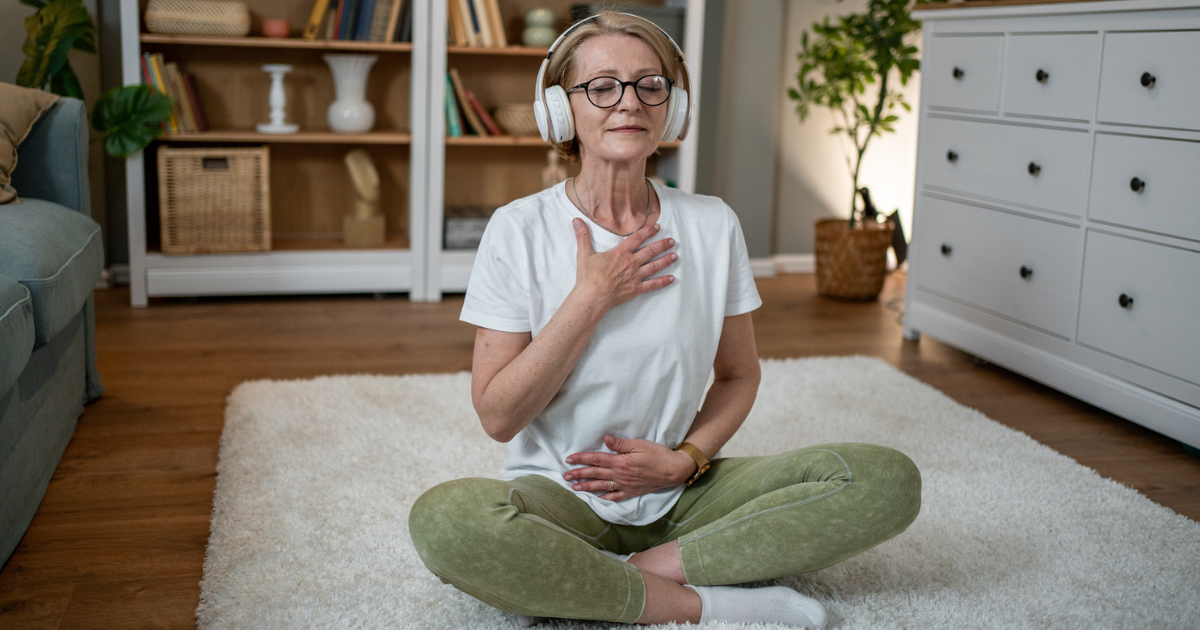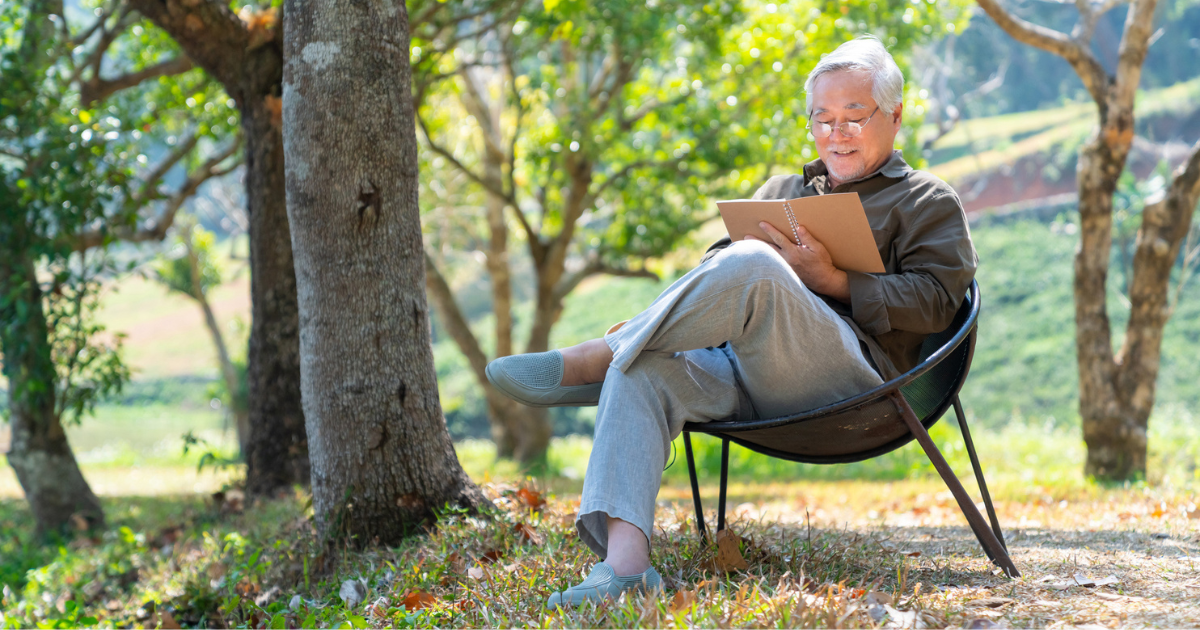
Anxiety can affect people at any age, but it often feels more challenging in the later years of life. Worry, restlessness, or physical tension can take a toll on the mind and body. The good news is that simple daily practices can make a real difference. With just a few minutes each day, you can build habits that bring calm, reduce stress, and support overall well-being.
Gentle Breathing Exercises for Quick Calm
Breathing exercises are one of the easiest ways to calm your body and mind. When you take slow, deep breaths, your nervous system signals that it is safe to relax. This lowers your heart rate and helps release tension, making it a simple but powerful relaxation technique for older adults.
The 4-4-4 Method
Many seniors find it helpful to practice this before bedtime, during stressful moments, or even while watching television.
- Inhale slowly through your nose for 4 seconds.
- Hold your breath gently for 4 seconds.
- Exhale through your mouth for 4 seconds.
- Repeat this cycle 4 to 6 times.
Easy adaptations: You can do this exercise while sitting in a chair, lying in bed, or resting with your feet up. If 4 seconds feels too long, shorten the count to 3 or 2 seconds. The goal is comfort, not perfection.
Extra support: If you enjoy guided help, try a free breathing app or an online video with soft prompts. Some apps even play calming sounds or music while you breathe, making staying focused easier.
Gentle Movement to Soothe the Body and Mind
Movement is one of the best ways to release built-up stress. Gentle yoga for seniors, simple stretching, or even a short walk can calm your nervous system while keeping your body flexible and strong.
Yoga and Stretching
You do not need to twist into complicated poses to feel better. A few low-impact stretches, such as reaching your arms overhead, rolling your shoulders, or sitting forward bends, can ease muscle tension.
Practicing gentle yoga helps you breathe more deeply and notice how your body feels, which can lower anxiety.
Chair Yoga Options
If mobility is limited, chair yoga offers the same benefits without needing to get down on the floor. Moves like seated twists, gentle side stretches, or lifting your legs one at a time help keep joints active and muscles engaged safely.
Walking Meditation
This combines movement and mindfulness. Take a slow walk (either indoors or outside) and pay attention to each step. Notice how your feet feel on the ground, the rhythm of your breath, and the sights or sounds around you. Even five minutes of mindful walking can clear your head and bring a sense of calm.
Resources to explore: Look for senior-friendly yoga classes at local community centers or senior wellness programs. If you prefer to stay home, many free online videos and apps guide you through short, safe routines designed for older adults.

Meditation and Mindfulness Practices
Meditation does not have to be complicated or time-consuming. Simple mindfulness practices can fit easily into your day and offer real relief from worry or tension. These relaxation techniques help calm racing thoughts and create a steady sense of focus.
Start with just 5 minutes in the morning or before bed. Over time, you can extend the practice if you want. Even a brief daily habit helps train your mind to slow down and respond more calmly to stressful moments.
Mindful Moments
Take a few minutes to notice what is around you. Listen to the sounds in your home or outside the window. Pay attention to a familiar scent, like your morning coffee or fresh air. Let your eyes rest on one small detail in the room.
These mindful pauses anchor your attention and make it easier to feel present.
Guided Meditation
If sitting quietly feels challenging, try a guided recording. Many free audio tracks and videos lead you through simple steps like focusing on your breath or relaxing your muscles. Having a gentle voice to follow can provide structure and make meditation feel more approachable.
Creative Outlets as Stress Relief
Creative activities offer more than just something to do. They provide healthy ways to express feelings, shift focus, and relax. For many older adults, these activities are some of the most enjoyable forms of relaxation because they feel rewarding and naturally reduce anxiety.
Art and Crafts
Simple projects like painting, knitting, or scrapbooking can become calming rituals. The act of choosing colors, repeating motions, or arranging photos gives your mind something steady to focus on. These small tasks help release stress and bring a sense of accomplishment.
Music Therapy
Listening to familiar songs often brings comfort. Soft, soothing music can lower tension, while upbeat tunes may lift your mood. Some seniors create playlists of favorite songs to play during the day, while others enjoy joining group sing-alongs or music classes.
Journaling
Writing down your thoughts is another useful outlet. Try keeping a small notebook where you jot down worries, memories, or a short gratitude list each day. This habit makes it easier to process emotions and notice positive moments, which supports overall well-being.
Positive Affirmations to Reframe the Day
Positive affirmations are short, encouraging statements that replace negative self-talk with more supportive thoughts. Repeating them regularly can shift your mindset and create a calmer, more hopeful outlook.
When you say something positive to yourself, your brain begins to believe it. Over time, affirmations help reduce stress and make it easier to respond to challenges with confidence.
Examples to Try
Choose one or two that feel meaningful to you. Repeat them in the morning, before bed, or anytime you feel anxious.
- “I am calm and in control."
- “Each day brings something good."
- “I have the strength to handle today."
Make It a Daily Reminder
Write your favorite affirmations on a small card or sticky note and keep them where you will see them (by the bathroom mirror, on the fridge, or near your favorite chair). These visual cues make it easier to make positive words part of your daily routine.

Building a Simple Daily Relaxation Routine
The best way to feel the benefits of relaxation is to make it part of your daily schedule. You do not need hours of free time to notice a change.
Even 10–15 minutes daily can help reduce stress and bring more calm to your routine.
- Keep it short. Start with a small block of time. You might do a few breathing exercises in the morning, take a short walk after lunch, or listen to calming music before bed.
- Mix techniques. Combine activities to keep them engaging. Pair breathing with gentle stretching, or add a few positive affirmations to your journaling.
- Consistency matters. Treat relaxation like an appointment. Choose a regular time each day and make it a habit. Over time, your body will learn to expect these calming moments, and it will become easier to manage stress.
Small Steps, Big Benefits
Small, daily relaxation practices can have a big impact on reducing anxiety for older adults. Whether breathing exercises, gentle movement, or journaling, each technique helps create a sense of balance and calm.
You do not have to do this alone. Keystone Health offers resources, in-home support, and personalized care plans to help seniors and caregivers maintain healthy routines.
